
If you need a freelance travel writer or you would like to see your country, city, flight, etc., presented on the blog, drop me an email.
Find our more on Freelance Travel Writer page.
This post Amman Things to do is dedicated to the capital of Jordan given that the city is abundant in places to visit. Amman is a modern city with the usual traffic jams (Arabic style), cozy hotels, nice walkways, and shopping malls with shops from Starbucks to Prada. I had a lot of fun when strolling around its lovely hills. The country is populated by Arab Muslims and considered somewhat wealthier than most in the region, but still not nearly as rich as the Gulf monarchies.
Nevertheless, the situation changes as soon as you travel away from Amman when the country gets dry and empty.
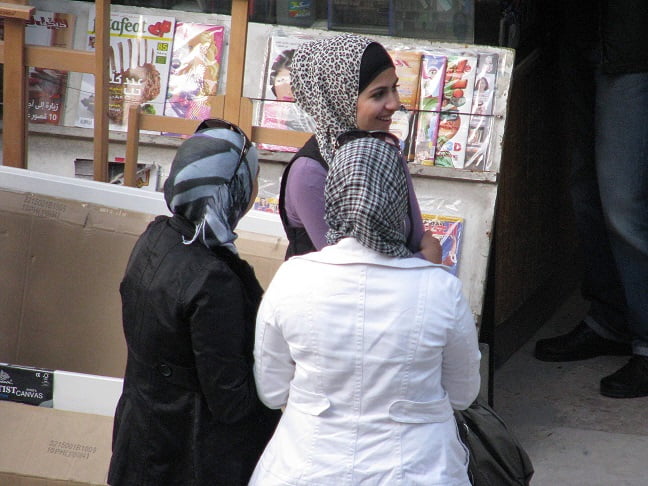
At the same spot where the Biblical Rabbath Ammon, mentioned in Genesis, once stood, there was a town that was conquered by King David in the 11th century. It got its independence back under the rule of King Solomon. The city then flourished under the Romans.
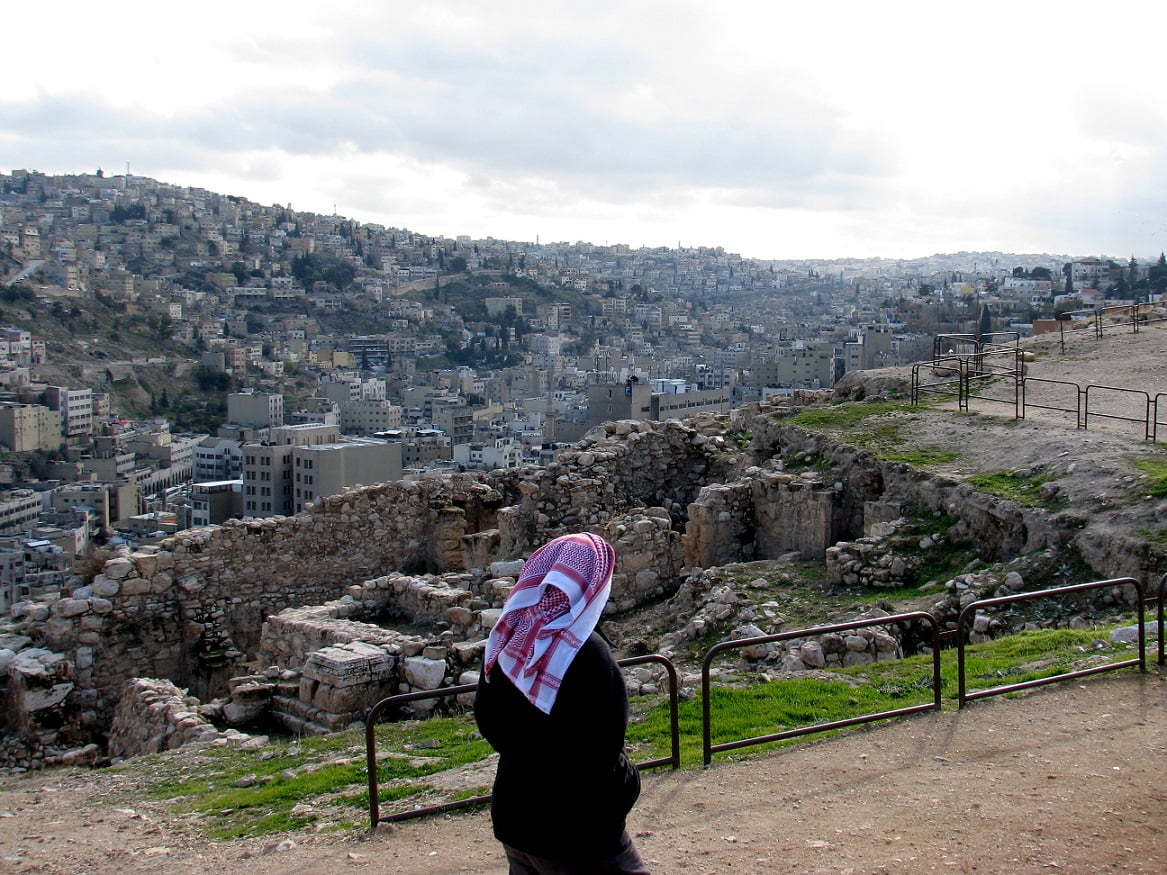
During Roman times, Amman was the regional center of the Philadelphia area. It was especially interesting because it stretched on 7 hills, just like the city of Rome did.
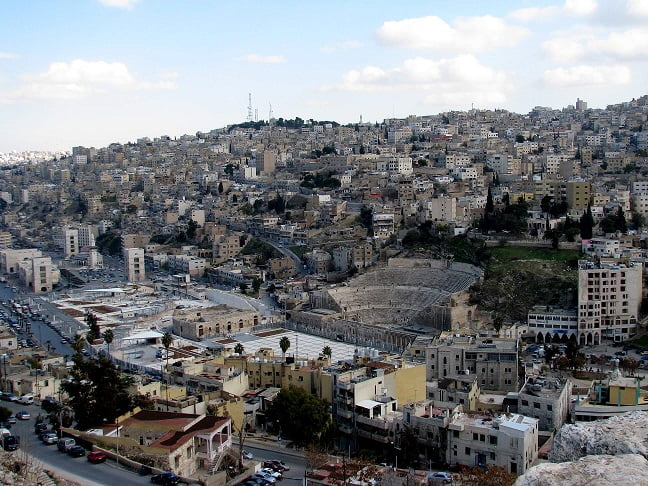
So, the Roman Forum and Theater which date back to the 2nd century AD and were able to host more than 6,000 spectators, are among the top tourist attractions. This area is still the heart of the capital. Parts of the ruins have been restored and the facilities are now often used for various cultural events.
A great view of the Theater is available from the hill above, where the famous Citadel is.

So, take a taxi – the route is a bit long and very steep – and go up the road to the hilltop. The best panoramic views of Amman are to be photographed from here or from the hill of the Abu Darwish Mosque.

This is where the acropolis of the ancient city stood. Today, you can stroll among the various Roman ruins. One of them represents the remains of the 2nd-century Temple of Hercules. It was erected in honor of Emperor Marcus Aurelius on a high terrace that was connected to the city below via monumental stairs that don’t exist anymore. The sacred building was decorated with four Corinthian columns, two of which are still standing.
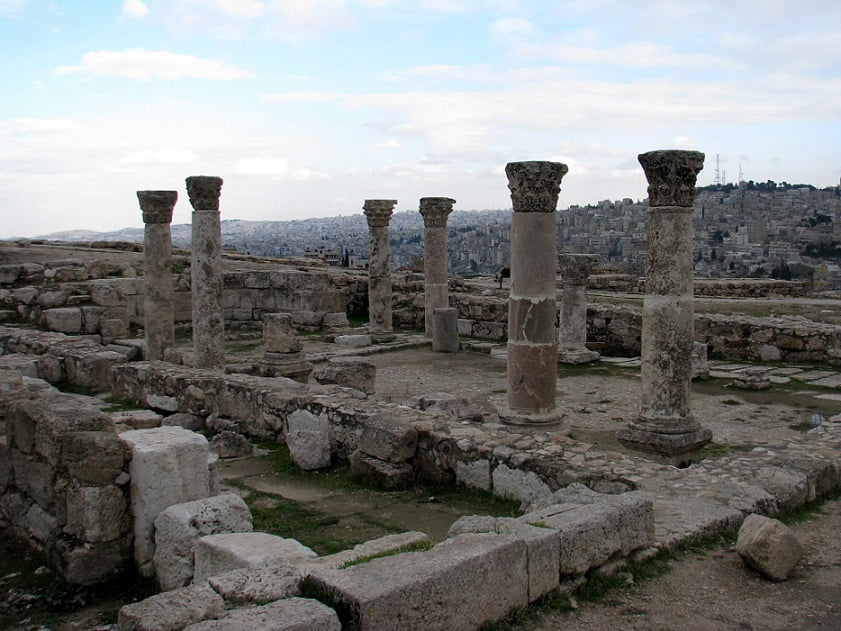
Next to the Temple ruins, you will see the remains of the 6th-century Byzantine church, but also the early medieval complex from the beginning of the Arab rule – the Al Qasr. Erected probably in the mid-8th century, in the final decades of Umayyad dynasty rule, the complex served as the urban residence of the governor and administrative center. Pay attention to the so-called Audience Hall rich in reliefs with spacious rooms.
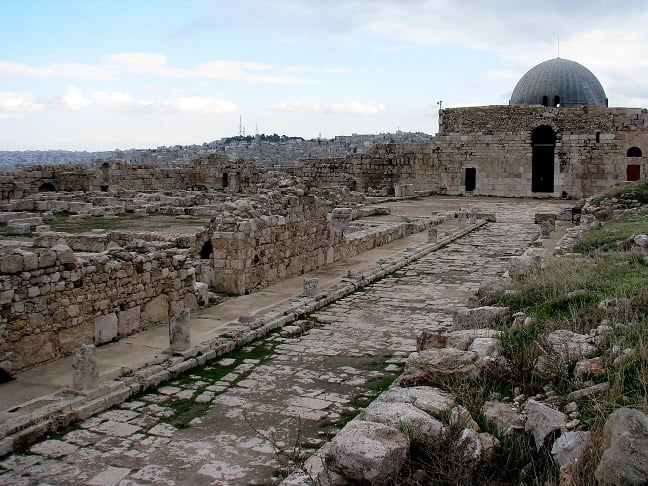
In front of the Archaeological Museum of Jordan which is also located on the hill, you will see the remains of the colossal statue, a hand coming out of the ground. The museum houses findings ranging in date from the earliest Neolithic period to the Ottoman Empire.
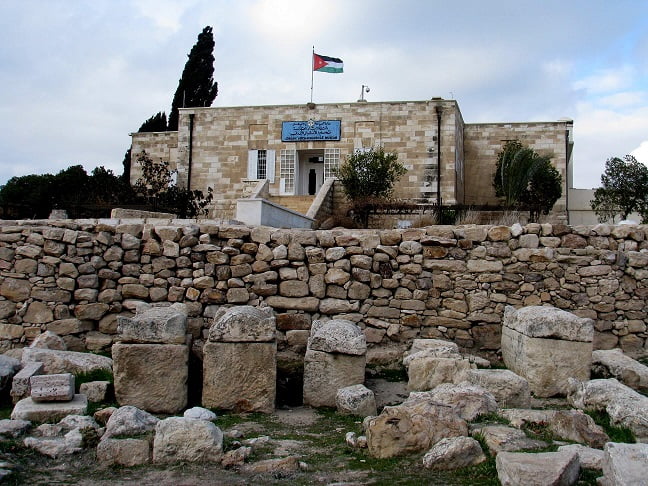
This is a perfect moment to mention a few interesting details. The day I went to see the Citadel and Abu Darwish Mosque, I ended up with my own personal taxi driver. It so happened that even though I wanted to go by myself (the way I visited so many countries in the world thus far), to take a few photos, visit the museum, stroll around, and have lunch in Downtown Amman – my Jordan friends had a different idea.
They didn’t openly say that I shouldn’t go solo but they booked me a taxi and instructed him to watch over me all the time. So, I ended up with a driver who took me wherever I wanted to go, didn’t leave me out of his sight all day, and drove me back home.
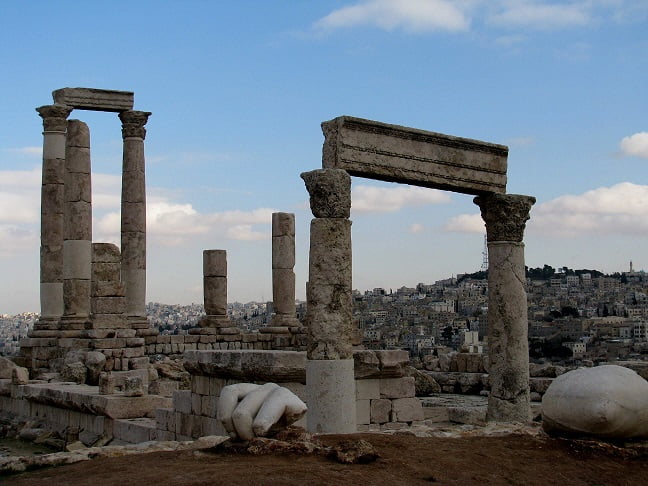
Before I even took them seriously, everything has already been arranged. I was just told to text the guy the next morning to confirm that “I will be down at 9 am”.
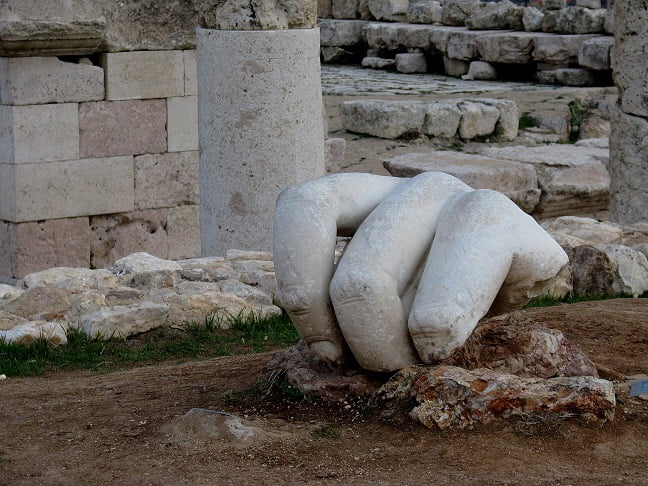
The man was nice, having fun with my clumsy Arabic sentences (I was just beginning to learn the language), and pretty serious regarding his “assignment“. Whenever I said that “there was really no need to wait“, or that „I could walk the rest of the way“, he just shook his head:
„No, no, no, Miss, please be so kind and let me drive you. What am I supposed to say if something bad happens? No, Miss, please.“
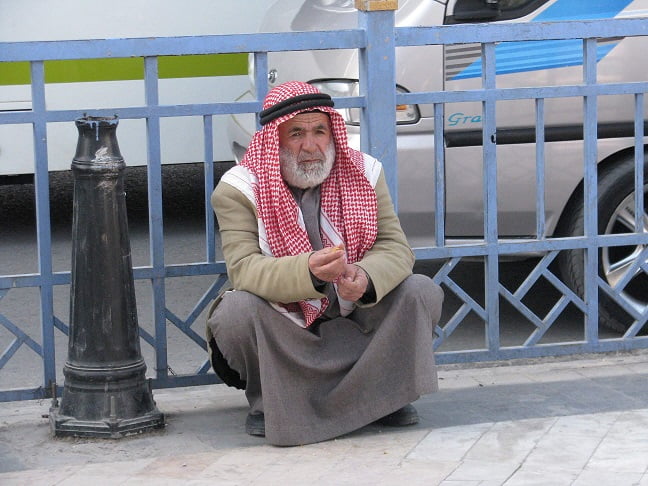
The whole day was fun. We drove to the Citadel and then back to Downtown Amman. I should probably mention regarding the driver’s precautions that Amman is quite safe. If you respect the country you come to and the rules that occur there (as you should as a visitor regardless of the place), no unpleasant situations will occur.
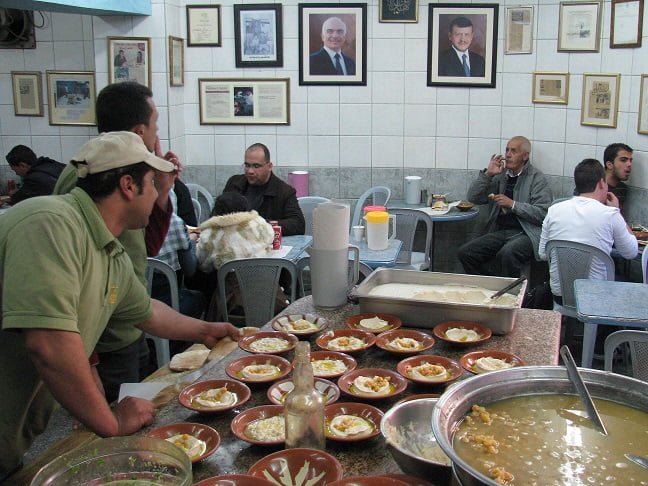
So, how about those AMMAN Things to do? Take a walk through the Downtown area, peek into the colorful stands, and choose where you would like to sit for a coffee (alcohol is only served in a few touristy places and sold in particular liquor stores). There are restaurants on every corner. If you like Greek, Turkish or Serbian coffee, you will also like the Arabic version, even though they add cardamon (a flavor easy to get used to). Everyone seemed to drink Coke and smoke sheesha pipes.
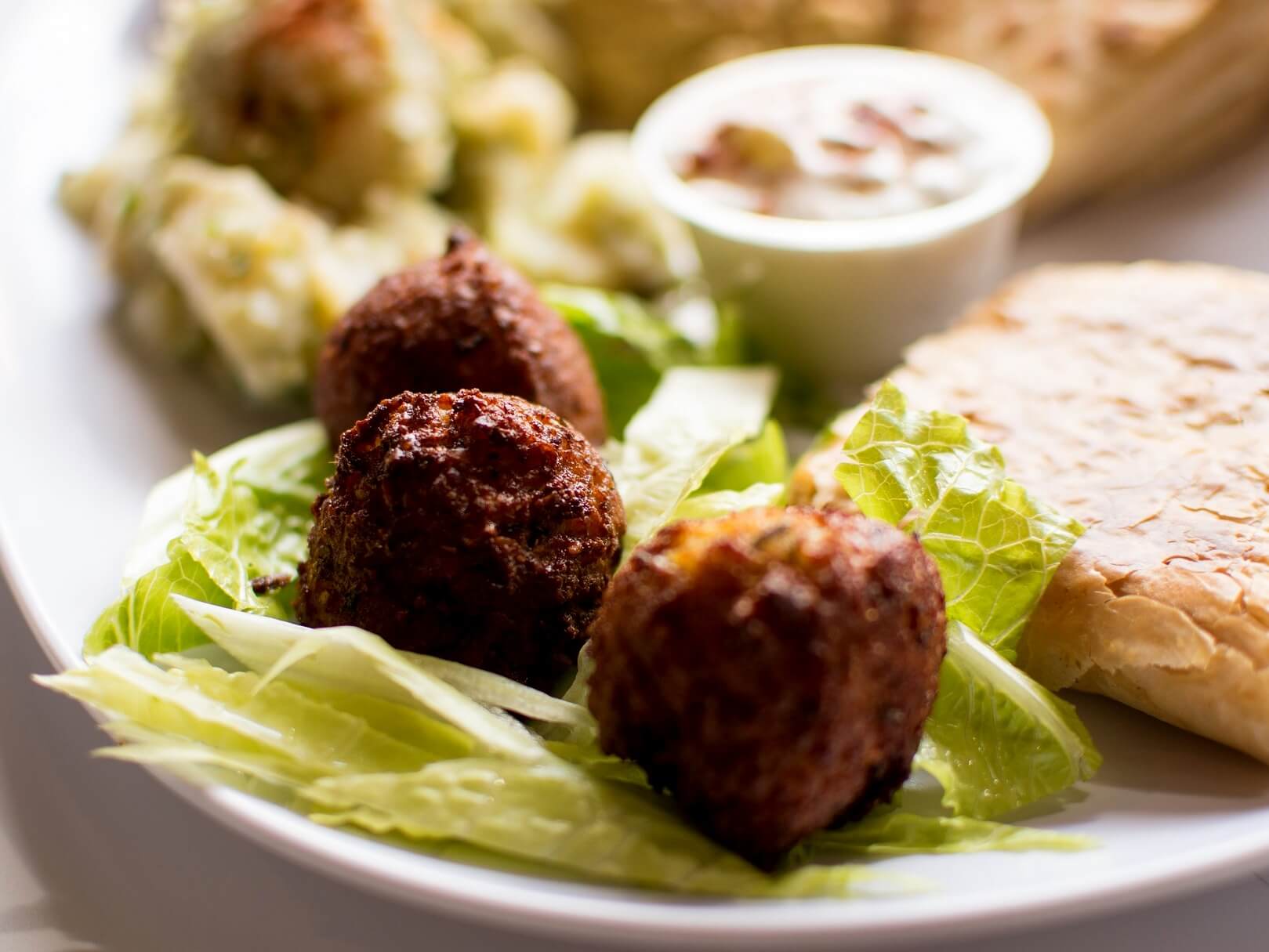
Once here, make sure to try the famous falafel and hummus breakfast. There is a small restaurant in Old Amman, not that alluring at a first glance but with one of the greatest falafels, you’ll try in Jordan. They say that “even the king drops by for breakfast occasionally“.
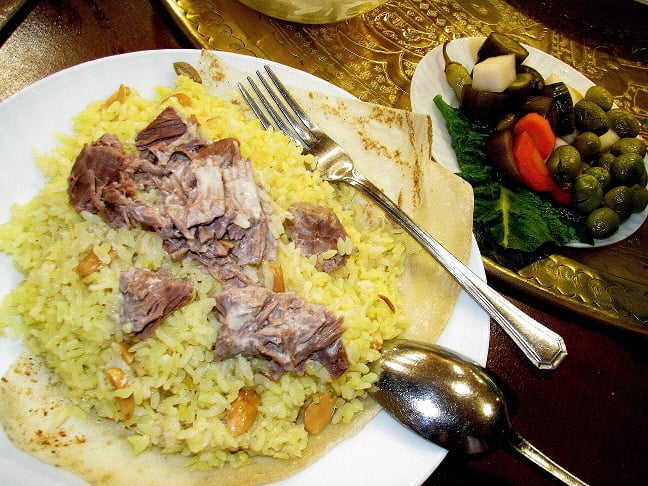
There is another yummy dish I just have to mention. It’s the main course, the traditional Arabic and Bedouin dish called mansaf. You will be served a thin slice of pastry covered with rice that is cooked with nuts, and tender lamb meat boiled in yogurt. I liked it so much that I tried to make it on my own a few times.

There is also an adorable sweet, a typical Arabic pastry soaked in sugar sauce. You will get the kadaif pastry with soft cheese in the middle. It gets heated up and the sauce is poured over so that the pastry gets crunchy and the cheese melts. These are the famous Arabic knafeh (or kunafa). Ever since I had it for the first time in 2008, I try to bring a kilo with me to Serbia every time I visit. And whatever Arabic country I went to afterward, I always look for knafeh.
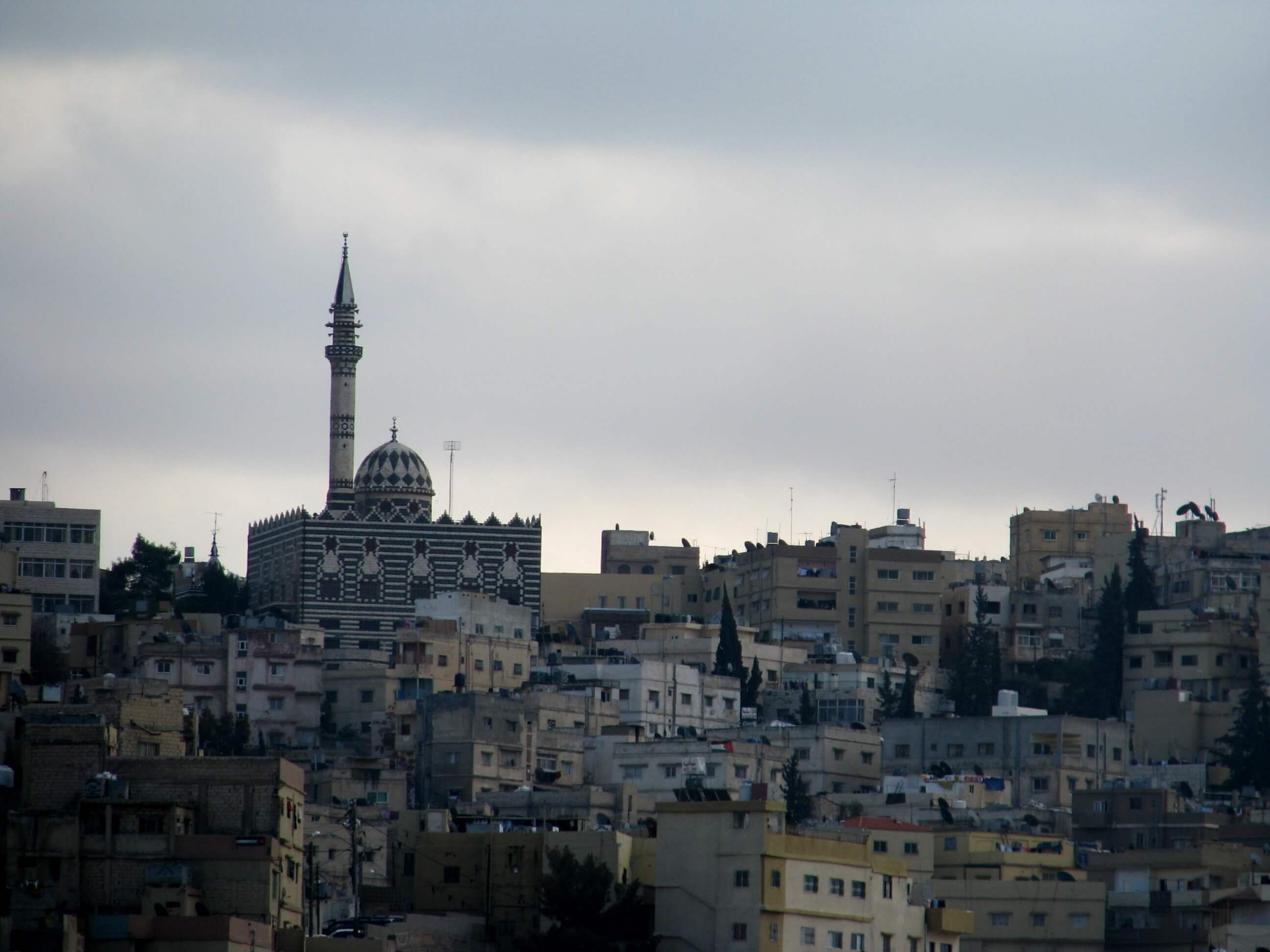
I should probably go back to my Amman Things to do before my mouth starts to water.
So, there are two popular mosques, besides the one in Old Amman, that can be seen from the central area of the capital. They are situated on two hills. (The modern city of Amman now stretches to 19 hills in the town area.) Those are the blue-domed Mosque of Malik Abdallah – the one Jordanians take great pride in because it was designed by one of the best contemporary architects, and the Abu Darwish Mosque – unique in its decoration in two-colored stone. This was the one I often took a glimpse of when going around the city and was impatient to visit.

And finally, there it was! It’s located in a neighborhood mostly populated by Armenians. As soon as I approached the mosque, children gathered around me, amused by the camera and the screen where they could see their own faces. The whole commotion would probably last longer if my responsible taxi driver didn’t come to check “what took me so long”.
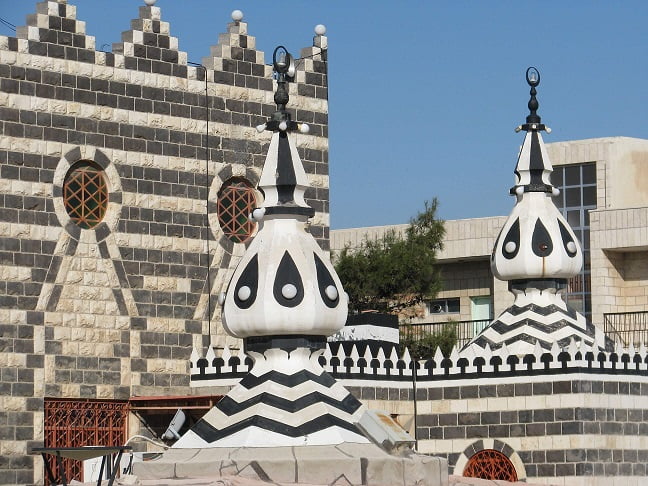
The view up here is priceless. And the Abu Darwish mosque is even more charming upfront – just look at these photos.
If you ask locals about Amman things to do or what to see in the city, they will probably refer you to shopping malls. They are always crowded and you will find shops, movies, and restaurants there. You can stop by one of them but they are like any other shopping mall in the world, except for more people here wearing traditional abaya dresses and white dishdashas.
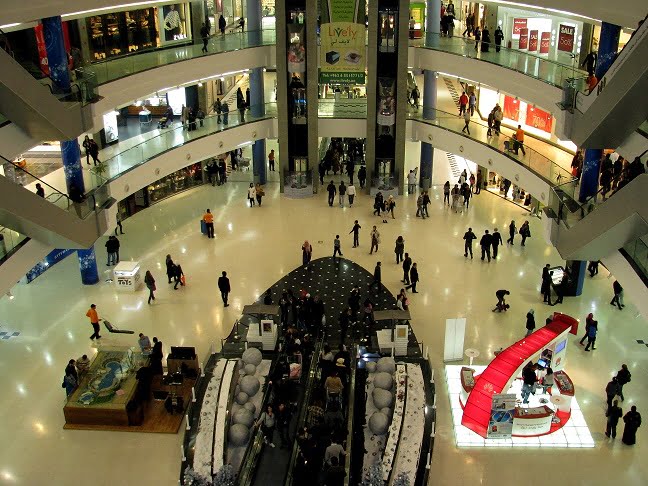
One more detail you might find interesting. The capital of Jordan is also known as the “white town” due to the local law, as I read somewhere, that every building or house has to be constructed out of the local white stone. So, go to any higher spot in the city and there will be a view of one whitish, hilly city to admire.
Next: CITY OF PETRA (3)
The full Jordan SERIES
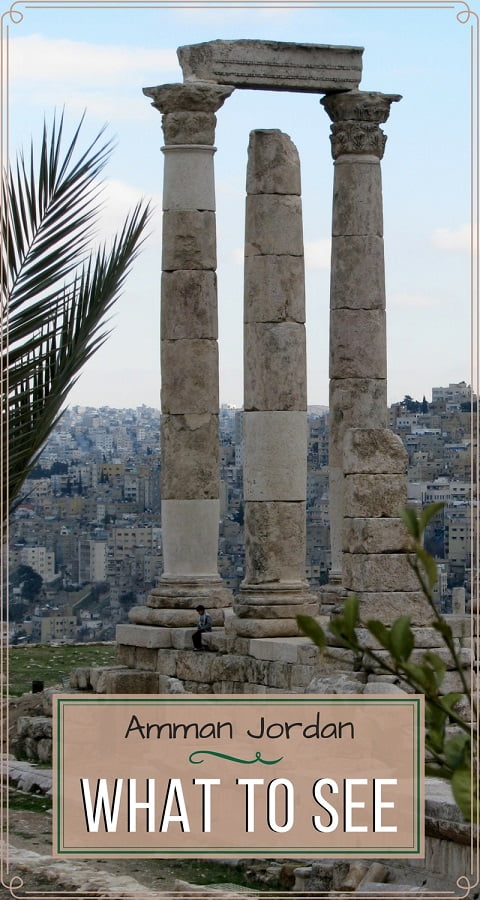
If you need a freelance travel writer or you would like to see your country, city, flight, etc., presented on the blog, drop me an email.
Find our more on Freelance Travel Writer page.
I am looking forward to working with you.
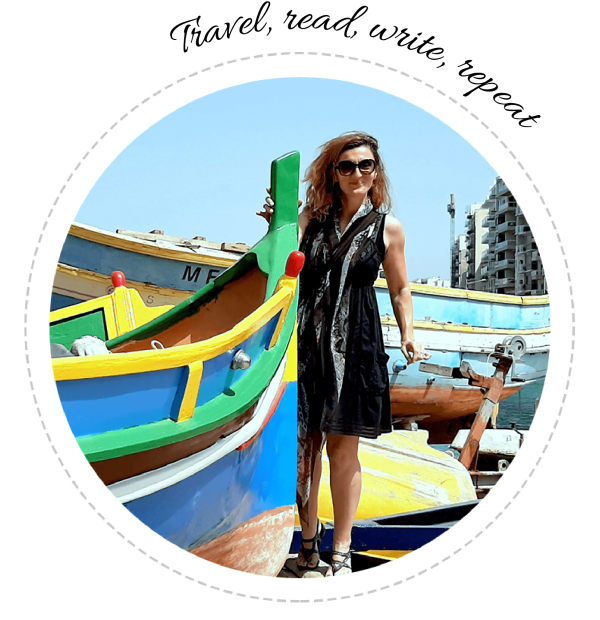



20 responses
Wow! This post definitely got me hungry! The food in Jordan looks incredible. What was the name of the family restaurant in the Old City?
That place Downtown was called the Hashem Restaurant, I think. But you can’t really miss it, it’s close to the Roman Theater, in the small alley with plastic tables and chairs. 🙂
Great ‘falafels’, really!
This place looks so great! I loved the Darwish mosque and the old town. Would it be easy as a Vegetarian to try the arabic cuisine? I love arabic food in general. Do you know why the law exists that all houses have to be white? Is it to cool? Looks like you really had a great trip. I think Oman must be a beautiful and a quite safe (?) place to visit.
If you love Arabic food, it will be easy to dive into their vegetarian dishes. A lot of their cuisine is based on meat, of course, but there a lot of dishes, salads that you can try and enjoy. I’ve mentioned falafels and hummus here, those are a must. And both basically made of – chickpeas! 😉
And for that white stone building law, I’m not really sure. It has something to do with high temperatures in the summer, of course, maybe with building material being local, but with mere esthetics as well. Still, I’m not sure what the main reason is…
But it looks nice. 🙂
A great insight into Amman. I’d been told it was worth visiting but didn’t realise what a rich cultural heritage there was. And those pastries! knafeh would be worth the visit just for a taste methinks
Hehehe, so true, knafeh is worth it. 😛
And who would have thought, I actually never liked those sugary Arab pastries, they were just too sweet for my taste. Still are. (Except for knafeh.)
But, look at me now – even writing about it! 😀
So nice things to do in Amman that you’ve listed down. But I like the food best, sure did make me hungry. Kadaif pastry is sweet! I love sweets I’ll definitely love this one if I ever got the visit here. Mosques are incredible.!
Thanks, so glad you’ve enjoyed the post! 🙂
The place looks incredible with a lot of historical things. I love to visit places like this. Apart from this yummy food best things for the food lovers
Oh, yes, a lot to see and explore here. 🙂
Wow i was planning a visit to Amman when i was in Israel but i ran out of time to cross the border, definitely Amman is on my list !
It was the other way around for me – was thinking about crossing over to Israel! 😀
Anyway, it turned out later that I couldn’t have done it after all, even if I had time, since I had “too many Arab countries stamps” in my passport. 😛 Some other time maybe.
I’ve heard such good things about Jordan, but never visited – I’ve always been a little nervous but your post puts me at ease. I think I’m most interested in the food to be honest – I love the sound of coffee with cardamon in it – thinking about whether I can recreate at home!
I’m sure you could actually.
When I went to the store to buy coffee, they used to put coffee beans in a grinder and I could choose how much cardamon seeds to add. So, you just grind them together and then when you make it, put a small spoon of coffee in a boiling water, and voila! One black, Arabic coffee for you. 😉
I love that there is such a wide array of things to do in Amman. I would want to see the Colossal hand, for sure. So mysterious and interesting to see it laying there. Plus, I would definitely eat. Your post made me hungry!
Glad you’ve enjoyed the post! Yes, that hand sure looks interesting. Huge and without the rest of the statue.
Thanks!
I didn’t realize that there was such a presence of Roman ruins in Jordan – I really loved Rome for its archeology though not a huge fan of crowds and it seems like Amman would be a great alternative in that sense.
How lovely of your taxi driver to take such good care of you on your day out!
If you are into Roman ruins, you should stop by the blog next week, since there’ll be a post on Jerash in Jordan. Now, that’s a Roman city! Incredibly preserved remains. 🙂
Great post! I never knew there was so much history and ruins here. A part of the world i did not think to explore.
Oh, prepare yourself for an adventure then given that there is so much to see and do in Jordan. 🙂 Feel free to browse around the whole series on the blog since there are separate articles on Petra, Jerash, Wadi Rum, Jordanian part of the coast of the Red Sea, etc. The Middle East is such an inspiring region.
Thanks, Laurie, so glad you like the post. <3